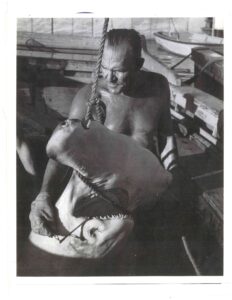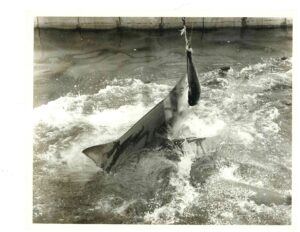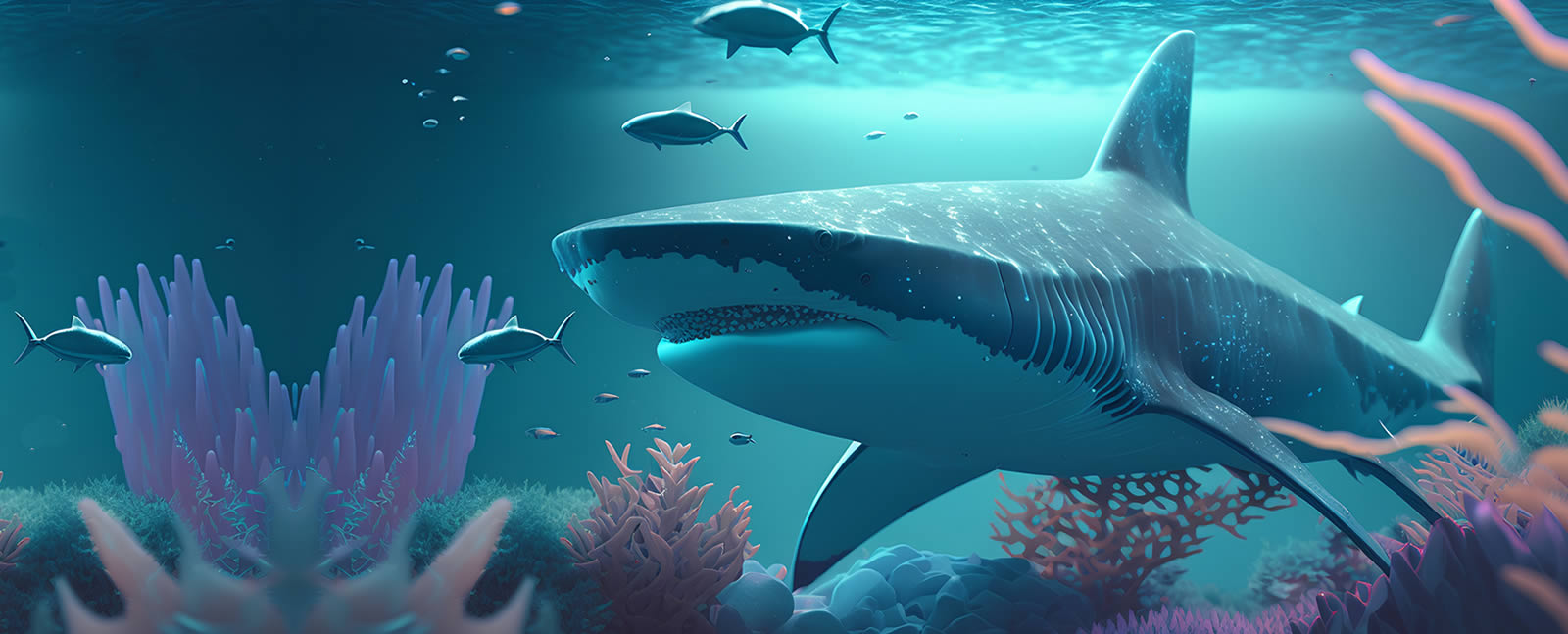
My husband’s stories about stocking the shark channel back in the 60’s and 70’s at the Miami Seaquarium alongside Marine Collector and co-founder of Marineland, Captain Bill Gray, inspired a road trip to Key Biscayne this past weekend. Oh, we knew the Seaquarium has followed the trail of all modern day aquariums: full of propaganda about saving the sea creatures and fighting off the most extreme of radical animal activists, those who want Lolita the killer whale set free after all her years in the comfort of captivity. (There were three protestors with a megaphone and a sign—Honk for Lolita!—and a cop car out front). We knew there’d be no sawfish, no killer sharks, or other ocean rarities—these things likely will never be seen again by landlubbing human eyes. Captain Bill Gray’s dream of bringing the ocean to people who will never venture out on a boat really is long forgotten. Founded in 1955, the Miami Seaquarium was once the largest marine attraction in the world.
In over sixty years, roadside attractions have gone by way of Disney, and aquariums have either become defunct —like Marineland—or have succumbed to competing with the landlocked likes of SeaWorld, and the overblown words of animal extremists, who over the years have succeeded in making marine collecting for the most part, illegal. (And, upon this writing, due to Save the Elephant craziness, the Ringling Brothers circus has closed for good leaving many out of jobs). Captain William Gray, and the captain of the Seaquarium collection boat, Charlie Buie, who my husband worked with in his youth, certainly are rolling over in their graves right now. Alas, the Miami Seaquarium is mostly about dolphins, sea lions, Lolita, scantily-clad young-girl trainers, and please do not throw plastic bottles on the reef.
But walking around the park on the windy winter day seeing the original Seaquarium though the eyes of my hubby, and hearing his stories of the grand days collecting of ocean oddities and killer sharks, gave me a sense of the true, old Florida. In those adventurous times before over-zealous do-gooders and developers killed all the fun. When alligator wrestling, airboat rides, trained elephants, killer sharks and giant sawfish drew families to Florida for adventure along our roadsides.
 The Seaquarium is a little weary looking— the rusty supports, chipped paint, murky tanks, gum-splattered stairs and outdated restrooms adding to the effect of a once grand place hanging on for dear life.
The Seaquarium is a little weary looking— the rusty supports, chipped paint, murky tanks, gum-splattered stairs and outdated restrooms adding to the effect of a once grand place hanging on for dear life.
Hubby and I hit all the shows. It’s always a thrill to see smiling dolphins jump into the air, although they do not jump as high as even I remembered when I took my daughter to the Seaquarium in 1993. I guess it’s “not good for the animals” anymore to jump so high.
 After the dolphin show, we watched sea lions picking up plastic bottles off a fake reef, then tried getting pictures of a diver feeding a moray eel through the murky tank window—“We used to scrub this tank every day” says husband— it was time to go to the shark channel to see “the feeding.”
After the dolphin show, we watched sea lions picking up plastic bottles off a fake reef, then tried getting pictures of a diver feeding a moray eel through the murky tank window—“We used to scrub this tank every day” says husband— it was time to go to the shark channel to see “the feeding.”
Um, what? Well we knew there were only a few lazy nurse sharks lolling at the bottom of the dirty channel, which at one time consisted of gin-clear saltwater and housed tiger, lemon and bull sharks, but to even advertise this as a “shark feeding” was a sad joke for sure. A girl stood on a platform on the water and with a long stick took a fish from a bucket and pushed it down deep into the water for the lazy nurse shark to eat. A tarpon swam by and a flock of pelicans provided more action and thrash than the sharks, who were as active as stuffed animals. Hubby commented later about there never being pelicans in the shark channel and then realized that, with actual killer sharks in the channel, pelicans would be lunch.

To make the “shark feeding” more ridiculous, a young man with a microphone stated all the outdated —and proven-to-be-false—shark propaganda to brainwash all the kiddies:
“One hundred million sharks are killed each year” (George Burgess, curator of the International Shark Attack File, says this was a “back of a napkin estimate, which included skates and rays.” the Shark Con, 2010)
“Sharks have more to fear from humans than you do of sharks,” ask the survivors of the USS Indianapolis about this statement.
“The odds of being hit by a falling coconut are higher than being bitten by a shark,” if you go into the water, naturally these odds change drastically, duh.
So, we had had enough. This nonsense was an insult to my hubby, the Sharkman of Cortez, who once made a living capturing rogue sharks close to shore and selling all parts of them, and capturing them live for marine attractions. My husband knows more about the nature and habits of sharks than these youngsters paid to spout silly untruths. I take his hand and say to him, let’s find a waterfront restaurant and get a bite to eat and a cold beer.

